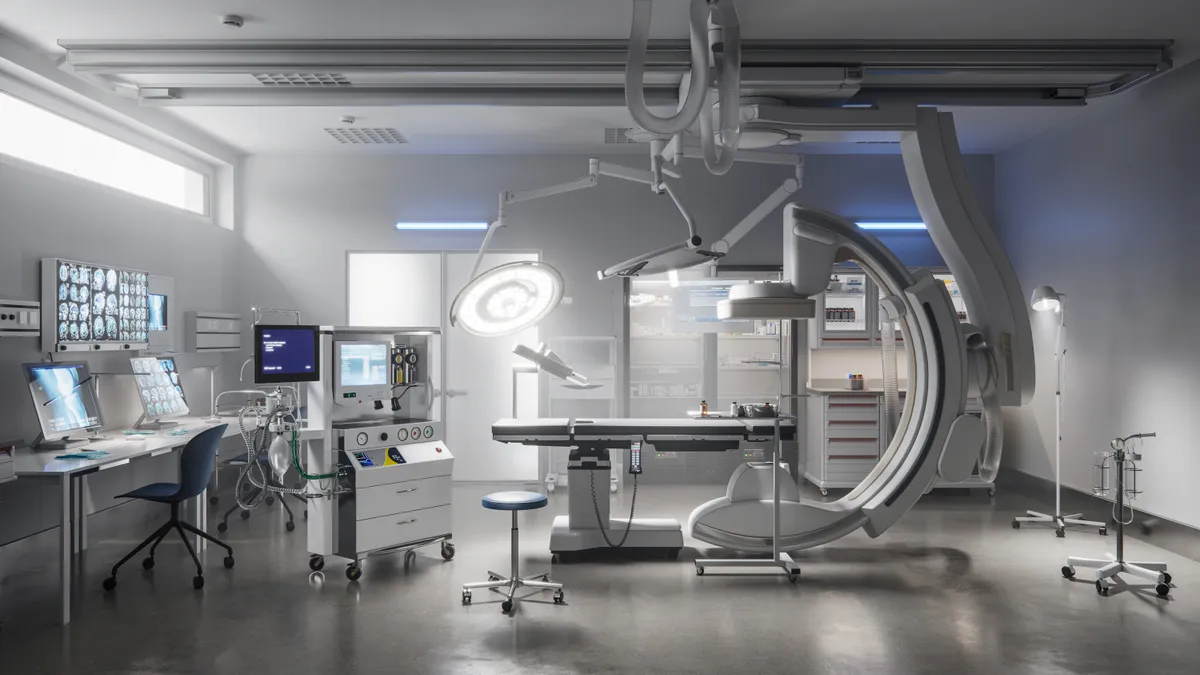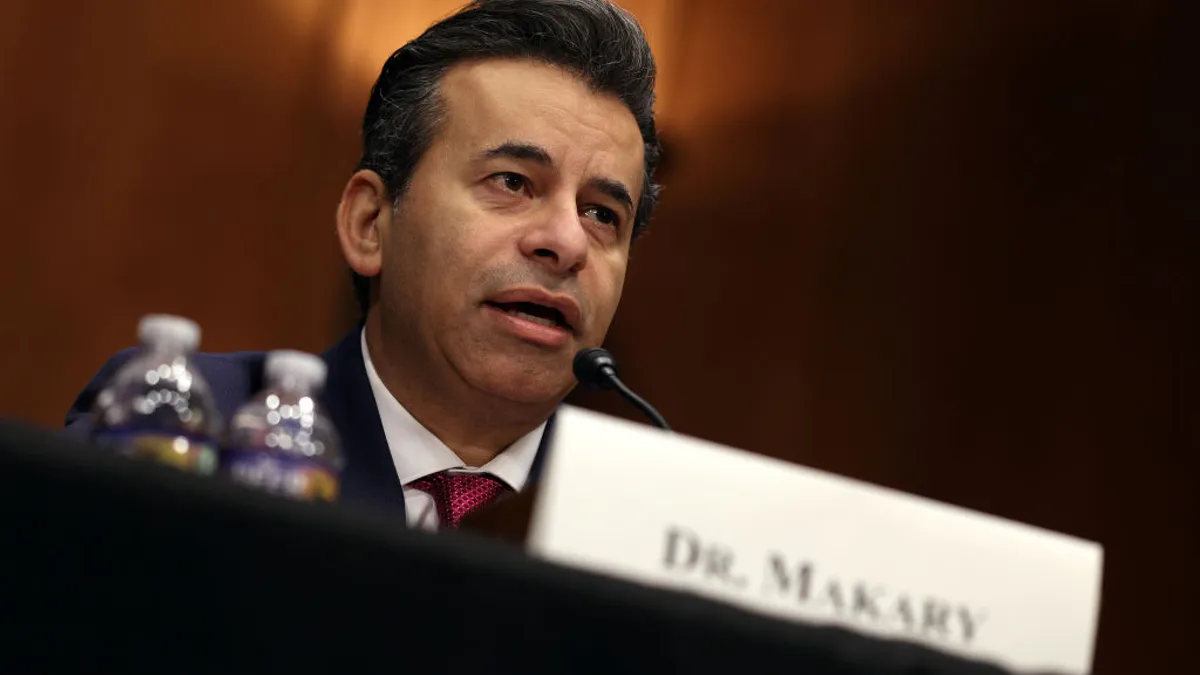This is the second article in a series looking at key trends and topics for the medtech industry in 2022. The first article explored key trends for diagnostics companies.
As the coronavirus pandemic heads into year three, the medical device industry is likely to face another year of challenges as procedure volatility and hospital staffing shortages already are ramping up in 2022.
Six months ago, medtechs were recovering from the first year of the pandemic as vaccination rates increased, procedure volumes steadily climbed and hospital operations normalized.
Then the delta variant upended recovery plans, forcing companies to brace for another surge and delay calls for a return to normal, only to be hit again in late 2021 by the rapid spread of the highly transmissible omicron strain.
The emergence of multiple variants, and others to possibly come, has quieted recovery talks for medtechs in 2022 and reintroduced questions the industry has been asking for the last two years: When will procedure volumes return to normal? How will hospital staffing impact surgeries? And, if, or when, will the next surge happen?
"This concept of a recovery trade in medtech that we had in 2021 — for a portion of 2021 — where medtech did relatively well … I just think that's out the window at this point," said SVB Leerink analyst Danielle Antalffy.
While all eyes are once again on the impact of the pandemic, topics such as another M&A spending spree and procedures continuing to move to ambulatory surgery centers (ASCs) are other top medtech trends to watch in 2022.
Procedure volume volatility
Surgery volumes fluctuated throughout 2021 and this year may be no different. After medtech CEOs at the J.P. Morgan Healthcare Conference earlier this month were relatively quiet about the impact of omicron on their businesses , Intuitive Surgical and Johnson & Johnson reported on recent earnings calls that volumes likely will decline in the first quarter of the year, if not the first half.
While more companies will report on their most recent quarter in the next few weeks — providing a glimpse at the early impact of omicron and the continuing impact of delta — experts are projecting more pressure on procedures.
"If we had this conversation a month ago — at the tail end of 2021 and before omicron really started to pick up — I would have suggested that the first quarter would be in a recovery mode with gradual improvement, although, limited by the fact that many hospitals are constrained by staffing," BTIG analyst Ryan Zimmerman said. "All that is still true, and all that holds true for the balance of 2022. But omicron, obviously, threw a curveball."
Companies have recently cautioned that omicron is limiting nonemergent procedures in the first quarter of the year, and because of the variant driving a surge in the final weeks of the fourth quarter and the opening weeks of the first, it may be months before the industry realizes the full impact of the variant.
Because of this unpredictability, companies likely will release conservative 2022 forecasts or suspend giving full-year guidance, according to both Antalffy and Zimmerman.
Mayuri Shah, a partner with Bain & Company, said, as has been the case for the last two years, procedures like orthopaedics will see more of an impact than others such as cardiac procedures as they are considered to be more deferrable.
Still, Shah said that cardiac procedures overall are "down meaningfully," spurring questions about whether surgeries traditionally viewed as more emergent are going be under pressure this year as well.
SVB's Antalffy said that a company like Edwards Lifesciences, which does cardiac procedures for more life-threatening conditions, is more "resilient" to the pandemic, while there are still questions about when revenue from the procedures will be booked. Some cardiac procedures are labor intensive and can be deferred a quarter or two regardless of how necessary they may be, according to the analyst.
Edwards CEO Michael Mussallem said during the J.P. Morgan conference that January was "starting slower than we originally planned," but at the time the situation was not bad enough for the medtech to alter its 2022 forecast of 12% to 15% sales growth for the transcatheter aortic valve replacement business.
Analysts agreed that the continuing COVID-19 outbreak, and the potential surges ahead, are curbing how fast companies can work through procedure backlogs, which medtechs continually pointed to throughout 2020 and 2021 as a positive sign for future revenue as the majority of procedures have to be performed eventually.
Nonemergent care has been shut down at various times over the past two years to conserve hospital resources and keep beds available for COVID-19 patients. However, this most recent surge may have a new element.
As procedure volumes are dropping again, Bain's Shah said that "this is the first time where we're seeing the staffing shortages also playing such a big role."
Hospital labor shortages
Staffing shortages have been a challenge for hospitals and other healthcare facilities for much of the last year and the issue seems to have grown as multiple industry executives have pointed to staffing shortages slowing businesses on their most recent earnings calls.
J&J CFO Joseph Wolk on Tuesday's earnings call with investors continually pointed to hospital staffing shortages as a cause for limited procedure volumes in the fourth quarter and said that the company likely will be affected throughout the year.
As labor shortages are being called out as top reasons for procedure volume pressure in the coming year, each new surge may exacerbate the problem of worker burnout or fatigue. Furthermore, smaller staffs limit the number of procedures a facility can perform, even when a hospital is not going through a COVID-19 surge.
"This is not an easy fix. Hospitals are trying to work as best they can with shorter staff and/or paying traveling nurses a ton of money," Antalffy said. "I think that's going to be the issue that we're talking about in six months."
BTIG's Zimmerman said that due to the nature of the pandemic, with multiple surges straining hospitals' staff and possibly more surges to come, staffing shortages may get worse before they get better.
"It's not just taking a nurse who graduated from nursing school or someone who's an ultrasound technician — those people become technically proficient over time, and then they become really productive in a specific area," Zimmerman said. "The fact that these are skill gaps that have been lost over the past 18 months or two years is a problem, and it's going to take some time to fix."
While labor shortages have been exacerbated due to COVID-19, it is a long-term, complex issue that likely won't be solved by an easing of the pandemic.
Another M&A spree
M&A this year kicked off with Stryker's almost $3 billion purchase of Vocera Communications. However, since the Stryker deal was announced, spending has slowed compared with the 10 deals announced in January 2021.
That likely won't continue. Medtechs still have cash stored because of more conservative spending habits throughout the pandemic, and while M&A has been a big theme for medtechs in the last several years — excluding 2020 — analysts expect dealmaking to continue for companies across the industry.
"We know that valuations are nearing all-time highs in the medtech space, that is still occurring. But companies have to grow, and even though there are assets out there that are expensive, companies in the space still are acquiring assets to drive creative growth," Truist Securities analyst David Rescott said. "We don't necessarily expect a slow down from a high level."
Stryker's Vocera announcement didn't spur a run of spending in January, even though the deal continued a larger trend of medtechs stepping out of their typical business lines and making digital-health investments.
The orthopaedic company's $3 billion purchase follows Baxter's $10.5 billion acquisition of Hillrom last year, which was motivated by Baxter growing its digital-health and connected-care offerings.
While medtechs may also use M&A to branch out to digital markets, Rescott said it's "probably a five-year type of story as opposed to something that we immediately see in 2022."
Bain's Shah said that category leadership will continue to be a key driver of M&A.
"Category leaders have more commercial strength in terms of their relationships with physicians and facilities, they generally tend to have more clinical expertise in the categories in which they play and then, importantly, relationships with the key opinion leaders there," Shah said, adding that companies then have the ability to further invest in those spaces.
Along with an increase in deal activity, 2022 could be another big year for medtech IPOs after hitting a five-year high last year, Rescott said.
Growth for ASCs
A bi-product of procedure shutdowns at hospitals has been the migrations of surgeries to ASCs — a trend that started before the pandemic but has taken off since and forced companies to rethink their business strategies.
ASCs provide alternative sites of care for specific procedures, allowing for hospitals to open up beds and conserve resources. In the past few years, CMS has allowed Medicare to cover more procedures in ASCs, and medtechs like Stryker, J&J and Zimmer Biomet have focused more on these facilities.
BTIG's Zimmerman said that other factors during the pandemic such as staffing shortages and preventing patients from being infected by the virus have all fueled procedure movement.
"It was like taking gasoline to a match," the analyst said.
Companies are not just utilizing ASCs more to replace procedure volumes as they were in the early days of the pandemic, but are now tailoring products to the specific facility. Bain's Shah said that orthopaedic companies are marketing their robotic surgery systems — Zimmer with Rosa; Stryker with Mako; J&J with Velys — as value propositions specifically for ASCs, a trend that likely will continue.
A key question is how much of those volumes will move back to hospitals when the pandemic improves. Stryker CEO Kevin Lobo said in January 2021 that the move is permanent and only going to accelerate, a prediction that may turn out to be correct the longer the pandemic goes on.
"There's a world in which some of [the complex cases] continue to live largely in the hospital environment," Shah said. "But the incremental time, the added time, where ASCs are improving on delivering these procedures will cement them as a key part of this ecosystem."




















